"The Journey to Mazandaran"
Milan Mölzer, Lucie Beppler, Toulu Hassani
curated by David Galloway

BECK & EGGELING
Bilker Strasse 5 und Bilker Strasse 4-6 40213 Düsseldorf Germany
+49.211.4 91 58 90 +49.211.4 91 58 99 e-mail:
25 April > 27 Mai, 2017
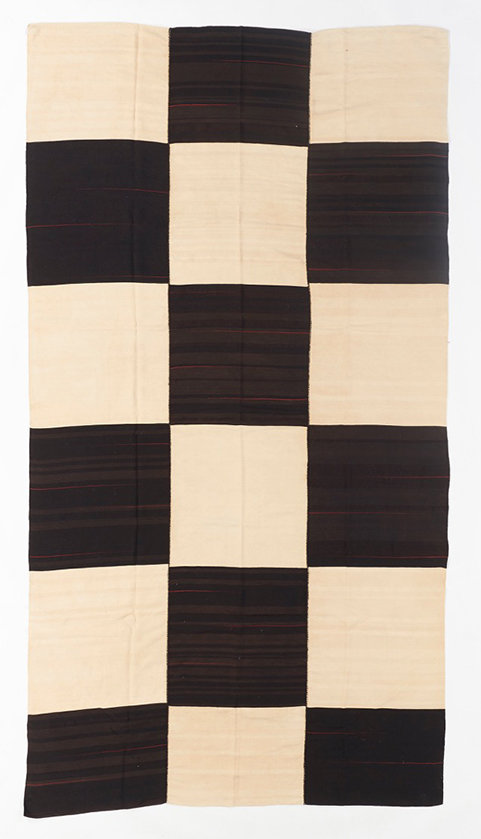 Māzandarān, Mitte 20.Jh., 375 x 207 cm © Teppichkunst Hirschberg, Köln |
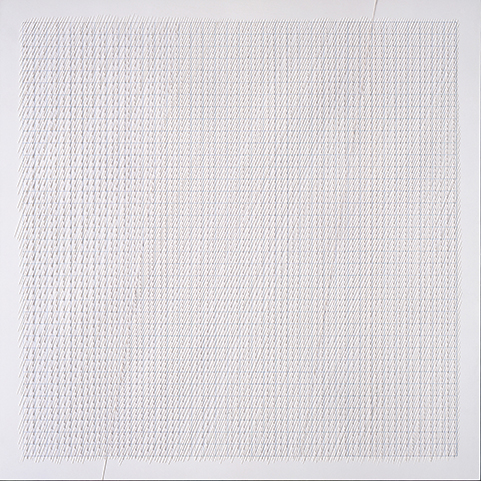 Milan Mölzer, Papier auf Papier, Papier geschnitten, Plexiglas-Objektkasten, 1975, 101 x 101 x 4,5 cm |
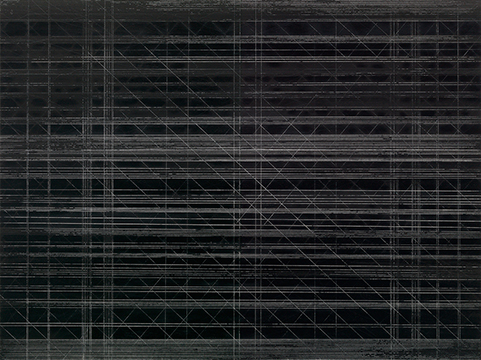 Lucie Beppler, o.T., Bleistift, Gravurnadel, Tusche, Öl auf mit Gesso grundiertem kartonstarken Papier, 2014/15, 75 x 100 cm |
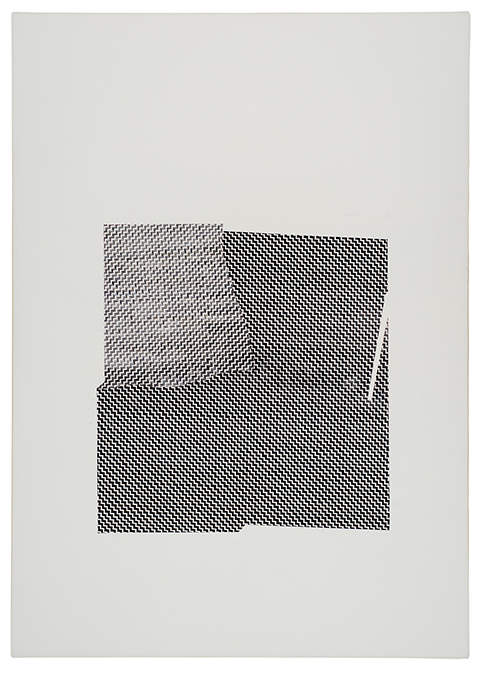 Toulu Hassani, o.T. Feinminentift, Öl auf Leinwand, 2016, 61 x 43 cm |
“Everything began with textiles.”
Gottfried Semper
Beck & Eggeling International Fine Art presents “The Journey to Mazandaran”, an exhibition curated by David Galloway. The exceptional concept shows traditional weaving art from Mazandaran – gelims by Teppichkunst Hirschberg – along with works by the contemporary artists Milan Mölzer, Lucie Beppler and Toulu Hassani.
Though one of the richest and most populous regions of Persia, Mazandaran province was largely inaccessible to early travelers. A semi-tropical area located between the Caspian Sea and the Elburz Mountains, it was densely forested, and its largely nomadic inhabitants were suspicious of foreign intruders. It was long believed that there was no significant carpet production here, though in fact virtually every household contained a narrow loom on which flat-weave strips were woven. Stitched together, these weavings often became floor-coverings of monumental size. Unlike the classic Persian carpets produced in urban centers according to detailed designs, such works placed no restrictions on the fantasy of their authors, who favored simple stripes, concentric squares or plain color-fields.
Though gelims have been produced in Mazandaran for at least 1,000 years, the first comprehensive study of these extraordinary weavings was not published until 2011. Entitled Undiscovered Minimalism, it suggests numerous parallels to the reductionist vision championed by Kasimir Malevich at the beginning of the last century and evolved in the 1960s by such New York artists as Donald Judd, Dan Flavin, Frank Stella and Ellsworth Kelly. The simple stripes and grids typical of works from Mazandaran suggest parallels to the minimalist aesthetic found not just in painting and sculpture but also in architecture and music of the post-modern period.
The relationship between textiles and the fine arts is both ancient and complex. An important chapter was written by the Bauhaus, where weaving enjoyed equal footing with traditional fine-arts disciplines. Painters from Rembrandt to Matisse were influenced by fabrics and carpets, but “The Journey to Mazandaran” is not about direct influence. Instead, it underscores a universal language that emerges across time, cultural divides and mediums. The simple horizontal line that structures a painting, a drawing or a gelim from Mazandaran can be extraordinarily diverse: still or dynamic, sensuous or coolly geometric, lyric or literal. So, too, the works of the contemporary artists – Milan Mölzer, Lucie Beppler and Toulu Hassani - presented here. For all their differences, they demonstrate profound affinities in the structuring of the picture plane and the use of unconventional tools and materials. Many of their rhythmic compositions suggest musical scores, where point and counterpoint underlie compositions at once reductionist and lyrically inflected.
“The Journey to Mazandaran” initiates a dialogue between weavings produced by anonymous Iranian authors and works by three contemporary artists who in turn represent three generations and three distinct cultures:
Milan Mölzer (*Prague, 1937 – 1976. Düsseldorf), who studied at the Düsseldorf Art Academy after fleeing with his family from Czechoslovakia in 1968, is represented by a series of “travel drawings” that underscore the motif of exploration and discovery at the heart of “The Journey to Mazandaran.” Since his tragic death in 1976, Mölzer’s works have never before been exhibited in Düsseldorf.
Lucie Beppler (*1961, Wetzlar) employs a variety of mediums and tools, including gesso, India ink, ballpoint pens, etching needles, and pencils to create intricately layered compositions in shades of black, grey and white. These polyphonic works record a process of revelation and concealment, of emergence and disappearance. Though often employing grid-like structures, they are never static but continuously enlivened by the interplay of light and darkness.
Toulu Hassani (*1984, Awaz, Iran) was awarded the Sprengel Prize in 2016. Her works on canvas document a subtle interplay of painting and drawing, of emptiness and fullness. Her precise geometries often reveal unexpected breaks, hesitations and omissions that seem to tease the eye of the spectator. Critics have seen predecessors and influences in Islamic architecture and Persian miniatures, but a scholarship to work in New York in 2014 also made a significant impact on her aesthetic.
David Galloway is Professor Emeritus at the Ruhr University Bochum. In 1977-1978 he served as Chief Curator of the Tehran Museum of Contemporary Art. He has curated exhibitions for the Ludwig Forum (Aachen), the Venice Biennial, the Moscow Museum of Modern Art, the Cologne Fine Art and Antiques Fair and the Saatchi Gallery (London).
Gottfried Semper
Beck & Eggeling International Fine Art presents “The Journey to Mazandaran”, an exhibition curated by David Galloway. The exceptional concept shows traditional weaving art from Mazandaran – gelims by Teppichkunst Hirschberg – along with works by the contemporary artists Milan Mölzer, Lucie Beppler and Toulu Hassani.
Though one of the richest and most populous regions of Persia, Mazandaran province was largely inaccessible to early travelers. A semi-tropical area located between the Caspian Sea and the Elburz Mountains, it was densely forested, and its largely nomadic inhabitants were suspicious of foreign intruders. It was long believed that there was no significant carpet production here, though in fact virtually every household contained a narrow loom on which flat-weave strips were woven. Stitched together, these weavings often became floor-coverings of monumental size. Unlike the classic Persian carpets produced in urban centers according to detailed designs, such works placed no restrictions on the fantasy of their authors, who favored simple stripes, concentric squares or plain color-fields.
Though gelims have been produced in Mazandaran for at least 1,000 years, the first comprehensive study of these extraordinary weavings was not published until 2011. Entitled Undiscovered Minimalism, it suggests numerous parallels to the reductionist vision championed by Kasimir Malevich at the beginning of the last century and evolved in the 1960s by such New York artists as Donald Judd, Dan Flavin, Frank Stella and Ellsworth Kelly. The simple stripes and grids typical of works from Mazandaran suggest parallels to the minimalist aesthetic found not just in painting and sculpture but also in architecture and music of the post-modern period.
The relationship between textiles and the fine arts is both ancient and complex. An important chapter was written by the Bauhaus, where weaving enjoyed equal footing with traditional fine-arts disciplines. Painters from Rembrandt to Matisse were influenced by fabrics and carpets, but “The Journey to Mazandaran” is not about direct influence. Instead, it underscores a universal language that emerges across time, cultural divides and mediums. The simple horizontal line that structures a painting, a drawing or a gelim from Mazandaran can be extraordinarily diverse: still or dynamic, sensuous or coolly geometric, lyric or literal. So, too, the works of the contemporary artists – Milan Mölzer, Lucie Beppler and Toulu Hassani - presented here. For all their differences, they demonstrate profound affinities in the structuring of the picture plane and the use of unconventional tools and materials. Many of their rhythmic compositions suggest musical scores, where point and counterpoint underlie compositions at once reductionist and lyrically inflected.
“The Journey to Mazandaran” initiates a dialogue between weavings produced by anonymous Iranian authors and works by three contemporary artists who in turn represent three generations and three distinct cultures:
Milan Mölzer (*Prague, 1937 – 1976. Düsseldorf), who studied at the Düsseldorf Art Academy after fleeing with his family from Czechoslovakia in 1968, is represented by a series of “travel drawings” that underscore the motif of exploration and discovery at the heart of “The Journey to Mazandaran.” Since his tragic death in 1976, Mölzer’s works have never before been exhibited in Düsseldorf.
Lucie Beppler (*1961, Wetzlar) employs a variety of mediums and tools, including gesso, India ink, ballpoint pens, etching needles, and pencils to create intricately layered compositions in shades of black, grey and white. These polyphonic works record a process of revelation and concealment, of emergence and disappearance. Though often employing grid-like structures, they are never static but continuously enlivened by the interplay of light and darkness.
Toulu Hassani (*1984, Awaz, Iran) was awarded the Sprengel Prize in 2016. Her works on canvas document a subtle interplay of painting and drawing, of emptiness and fullness. Her precise geometries often reveal unexpected breaks, hesitations and omissions that seem to tease the eye of the spectator. Critics have seen predecessors and influences in Islamic architecture and Persian miniatures, but a scholarship to work in New York in 2014 also made a significant impact on her aesthetic.
David Galloway is Professor Emeritus at the Ruhr University Bochum. In 1977-1978 he served as Chief Curator of the Tehran Museum of Contemporary Art. He has curated exhibitions for the Ludwig Forum (Aachen), the Venice Biennial, the Moscow Museum of Modern Art, the Cologne Fine Art and Antiques Fair and the Saatchi Gallery (London).
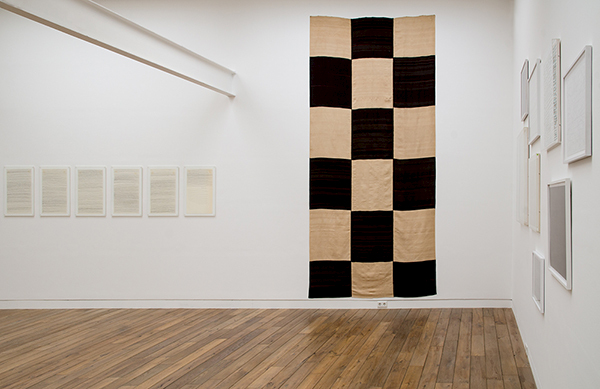 Installationsansicht: Kelim: Māzandarān, Mitte 20.Jh., 375 x 207 cm © Teppichkunst Hirschberg, Köln |



 Lucie Beppler |
OPENING :
Saturday, 6 May 2017, noon – 2 pm







